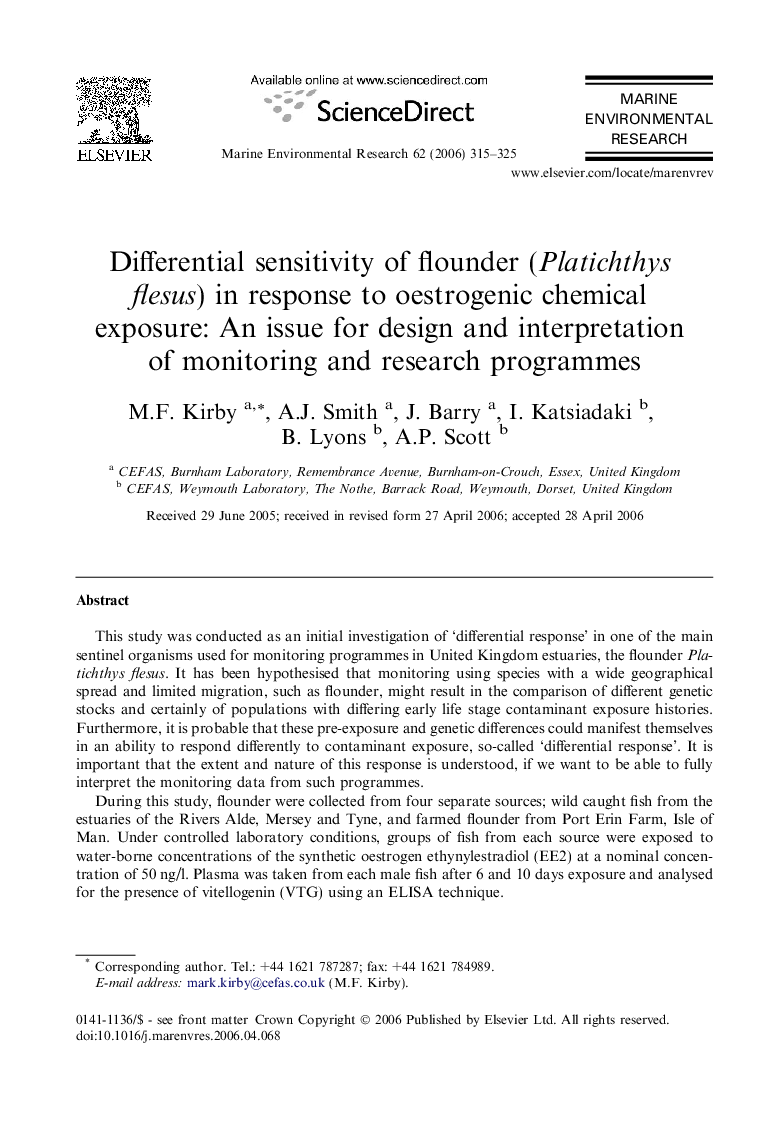| Article ID | Journal | Published Year | Pages | File Type |
|---|---|---|---|---|
| 4551915 | Marine Environmental Research | 2006 | 11 Pages |
This study was conducted as an initial investigation of ‘differential response’ in one of the main sentinel organisms used for monitoring programmes in United Kingdom estuaries, the flounder Platichthys flesus. It has been hypothesised that monitoring using species with a wide geographical spread and limited migration, such as flounder, might result in the comparison of different genetic stocks and certainly of populations with differing early life stage contaminant exposure histories. Furthermore, it is probable that these pre-exposure and genetic differences could manifest themselves in an ability to respond differently to contaminant exposure, so-called ‘differential response’. It is important that the extent and nature of this response is understood, if we want to be able to fully interpret the monitoring data from such programmes.During this study, flounder were collected from four separate sources; wild caught fish from the estuaries of the Rivers Alde, Mersey and Tyne, and farmed flounder from Port Erin Farm, Isle of Man. Under controlled laboratory conditions, groups of fish from each source were exposed to water-borne concentrations of the synthetic oestrogen ethynylestradiol (EE2) at a nominal concentration of 50 ng/l. Plasma was taken from each male fish after 6 and 10 days exposure and analysed for the presence of vitellogenin (VTG) using an ELISA technique.Significant levels of VTG induction were evident in fish from all sources after both 6 and 10 days exposure. Flounder from the Mersey were the only fish with significantly elevated initial background levels of VTG (day 0) and this appeared to be reflected in that these specimens showed the highest induction response after day 6. However, after day 10, fish from all other sites had a slightly higher mean VTG than those from the Mersey which showed significantly (p < 0.05) lower mean plasma VTG. It is suggested that other differential responses may have been masked by the use of a high dose of EE2 which produced maximum induction in nearly all fish. The findings of the study are discussed in terms of implications for further research into the differential response issue and how the initial plasma VTG figures contribute to a time-series from the Mersey, Tyne and Alde estuaries.
